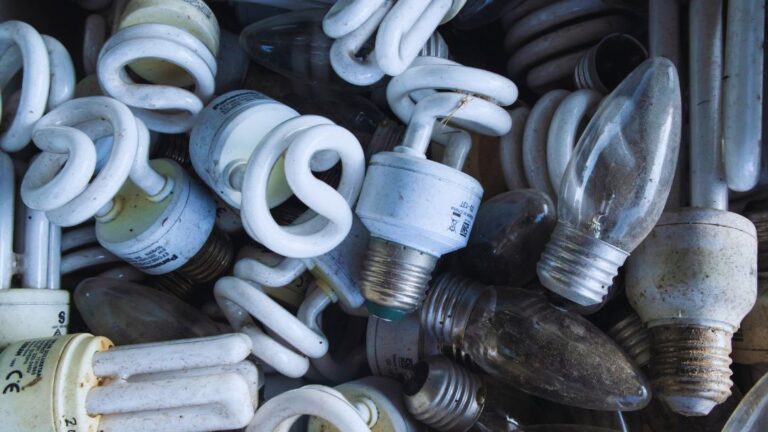Are There Specific Regulations and Precautions for Safety Storage in Charleston, IL?
- Jonathan R.
- August 7, 2024
Table of Contents
Storing hazardous materials isn’t just about finding a place to stash them; it’s about ensuring everything is safe, secure, and compliant with the law. Knowing the ins and outs of safe storage is essential in Charleston, IL, with its bustling industries and strict safety standards.
Next, we’ll explain everything you need to know about safety storage in Charleston IL. Let’s begin, shall we?
Understanding Local and Federal Regulations
In Charleston, IL, safety storage regulations are serious business. Both federal and state rules ensure that hazardous materials are stored safely.
OSHA, the Occupational Safety and Health Administration, lays down the law with strict safety measures aimed at preventing workplace injuries and illnesses. Meanwhile, the Environmental Protection Agency (EPA) ensures our storage practices don’t harm the environment.
Illinois OSHA (IL OSHA) adds an extra layer of state-specific rules. These include detailed record-keeping, regular safety audits, and mandatory employee training programs. Following these regulations isn’t just a good idea; it’s the law, ensuring everyone’s safety.
Key Federal Regulations
Federal OSHA requires businesses to store hazardous materials in designated, clearly labeled areas. Proper ventilation and fire suppression systems are also a must. Plus, the EPA insists on Spill Prevention, Control, and Countermeasure (SPCC) plans to handle any potential spills of oil and hazardous substances.
State-Specific Rules
Illinois steps up with its own rules that go hand-in-hand with federal guidelines. IL OSHA mandates regular safety inspections and thorough employee training. These rules make sure everyone handling hazardous materials knows what they’re doing.
Additionally, Illinois regulations require secondary containment for large quantities of hazardous substances to prevent spills and leaks from reaching the environment.
Key Safety Precautions
Are you handling hazardous materials? Safety first! Let’s dive into some essential precautions.
Proper Labeling and Categorization
First up, labeling. Every hazardous material needs a label that tells you what it is, why it’s dangerous, and how to handle it safely. Clear labels can make a world of difference, especially in emergencies.
Ventilation and Fire Suppression
Next, let’s talk air and fire. Proper ventilation in storage areas prevents toxic fumes from building up. Fire suppression systems, like sprinklers, are essential to control fires before they get out of hand. In Charleston, IL, strict building codes ensure these safety features are in place.
Employee Training
You can have the best equipment in the world, but it’s worthless if your team isn’t trained. Workers need to know how to handle hazardous materials, what to do in an emergency, and how to use personal protective equipment (PPE). Ongoing training keeps everyone sharp and up-to-date with the latest safety practices.
Types of Storage Solutions
Not all storage solutions are created equal. Let’s look at some options for hazardous materials.
Prefabricated Chemical Storage Containers
These aren’t just fancy boxes. Prefabricated chemical storage containers come with spill containment systems, ventilation, and temperature controls. They meet all environmental and safety regulations, making them a solid choice for hazardous material storage.
Custom-Built Storage Buildings
Have you got a lot of hazardous materials? Custom-built storage buildings are the way to go. These buildings are designed to house large quantities of hazardous materials safely. They feature fire-resistant walls, explosion-proof lighting, and advanced monitoring systems to detect leaks or other hazards.
Modular Storage Units
Need flexibility? Modular storage units can be added or removed based on your storage needs. They’re a cost-effective solution that doesn’t skimp on safety. These units are especially popular in industries with fluctuating storage requirements.
Spill and Leak Prevention
Spills and leaks can cause serious problems. Here’s how to prevent them effectively.
Secondary Containment Systems
Secondary containment systems, like bunding and spill pallets, catch leaks and prevent them from spreading. Regular inspections and maintenance ensure these systems are always ready to do their job. These measures protect the environment and keep you compliant with regulations.
Emergency Response Planning
Every business needs a solid emergency response plan. This plan should include procedures for containment, cleanup, and reporting of spills and leaks. Employees must be trained to execute these plans efficiently. A good emergency response plan can significantly reduce the impact of a hazardous material spill.
Documentation and Compliance
Paperwork might not be glamorous, but it’s crucial. Proper documentation keeps you compliant and ready for inspections.
Routine Audits and Inspections
Regulatory agencies conduct routine audits and inspections to ensure businesses follow safety standards. Non-compliance can lead to hefty fines and legal trouble, so it’s vital to stay vigilant and proactive in your safety practices.
Digital Tools for Documentation
Digital tools can make documentation a breeze. Software solutions help manage inventory, track safety inspections, and generate compliance reports. These tools enhance efficiency and ensure compliance with regulatory requirements.
Partnering with Safety Storage Inc.
At Safety Storage Inc., we get it. Proper safety storage is crucial. With over 35 years of experience, we offer customized, prefabricated storage solutions that meet all regulatory requirements and exceed quality standards. Based in Charleston, IL, we’re your trusted partner for all hazardous material storage needs.
Our storage containers are designed with safety in mind. They have advanced spill containment systems, fire-resistant materials, and state-of-the-art ventilation. We also offer custom-built storage buildings tailored to your specific needs, ensuring your storage solutions are safe, efficient, and cost-effective.
Conclusion
Safety storage in Charleston, IL, is about more than just following rules. It’s about keeping people safe, protecting the environment, and ensuring peace of mind. By understanding and implementing the proper regulations and precautions, businesses can create a secure and compliant storage environment.
At Safety Storage Inc., we’re dedicated to providing top-notch storage solutions that meet and exceed safety standards. With our extensive experience and commitment to quality, we’re confident in our ability to help you manage your hazardous materials safely and efficiently. Regarding safety storage in Charleston, IL, we’ve got your back every step of the way.
Read More:
Temperature Controlled Buildings

Jonathan Reed
Jonathan Reed specializes in writing in-depth, data-driven content on industrial waste management, regulatory compliance, and environmental sustainability. With expertise in hazardous waste disposal, OSHA guidelines, and waste reduction technologies, he provides actionable insights for businesses navigating complex waste management challenges.



